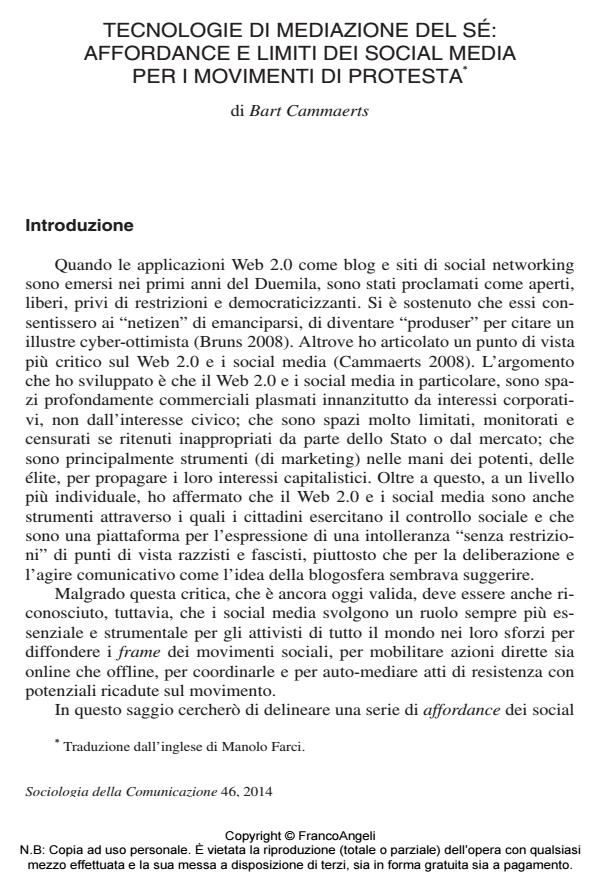Technologies of Self-mediation: Affordances and Constraints of Social Media for Protest Movements
Journal title SOCIOLOGIA DELLA COMUNICAZIONE
Author/s Bart Cammaerts
Publishing Year 2014 Issue 2013/46
Language Italian Pages 19 P. 15-33 File size 564 KB
DOI 10.3280/SC2013-046003
DOI is like a bar code for intellectual property: to have more infomation
click here
Below, you can see the article first page
If you want to buy this article in PDF format, you can do it, following the instructions to buy download credits

FrancoAngeli is member of Publishers International Linking Association, Inc (PILA), a not-for-profit association which run the CrossRef service enabling links to and from online scholarly content.
Social media has been appropriated by activists in order to disseminate social movement frames, to mobilise for direct actions online as well as offline, to coordinate direct action and to self-mediate acts of resistance leading potentially to movement spill-overs. It suffices to point towards the role of social media during the Arab Spring, Occupy, the V for Vinegar protests in Turkey and Brazil ecc. to emphasise this point. In my presentation I will use Foucault’s concept of the technologies of the self to make sense of the various roles social media are playing for protest movements in terms of their self-mediations. Foucault referred to disclosure, examination and remembrance, but I will add a fourth technology of the self, which is highly relevant today, namely amplification. Besides affordances, we also need to acknowledge the constraints inherent to technologies of self-mediation such as social media. These manifest themselves mainly in terms of access, the tensions between individualism and collective identities, issues in relation to narrowcasting versus broadcasting and serious concerns at the level of control and counter-surveillance by states and corporate actors. While an important newtool in the repertoire of contentious action of protest movements, the potency of social media should also not be exaggerated and activists need to be aware of their limitations.
Keywords: Foucault, protest movements, social media, affordances, surveillance.
Bart Cammaerts, Tecnologie di mediazione del sé: affordance e limiti dei social media per i movimenti di protesta in "SOCIOLOGIA DELLA COMUNICAZIONE " 46/2013, pp 15-33, DOI: 10.3280/SC2013-046003